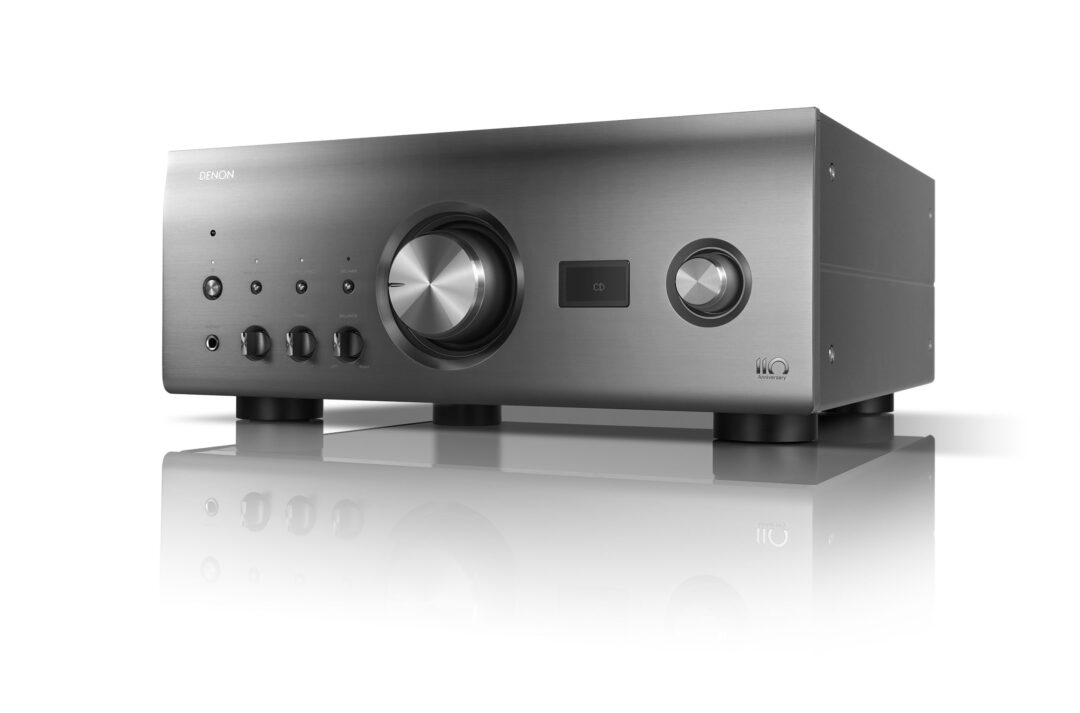Japanese Denon can celebrate its 110th anniversary this year. It’s a respectable age for a hi-fi manufacturer – and not much younger than the electricity grid itself!
To celebrate the anniversary, Denon has made a series of special editions of some of its best models. The models have received extra care on the audio side with even better components and more uncompromising construction. On the amplifier front, this applies to the integrated amplifier Denon PMA-A110.
If the PMA-A110 seems familiar, the reason is that it is largely built over the PMA-2500ne that we have previously tested. Beneath the titanium gray surface, however, it is at least as akin to the enthusiast amplifier PMA-SX1, which is not exported to the West at all. What can also be seen on the price. That’s half as high as the PMA-2500ne.
As heavy as in the old days
When it comes to amplifiers, one can get a clue about the quality by looking at the weight. And here Denon PMA-A110 scores gravity points. Put next to the NAD M33, which I tested recently, it’s hard to see that the PMA-A110 is both cheaper and far less powerful. It is almost twice as big – and almost three times as heavy!
This is in line with the design principle: the Denon is a class AB amplifier, and there is no saving on heat sinks or the power supply, which is of course of the classic linear type. No switched mode gadgetry is allowed in here!
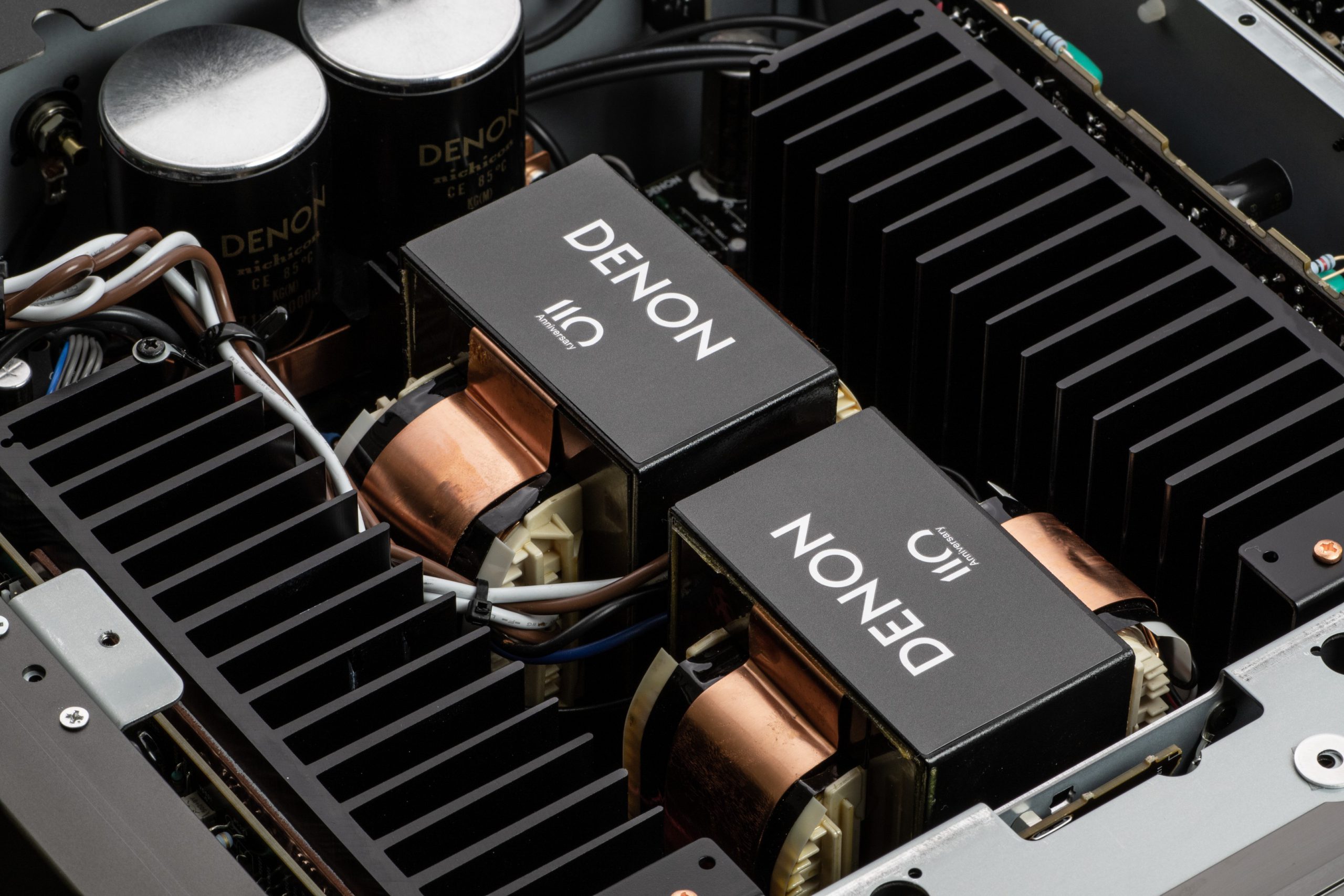
Musicality rather than power
Despite the many kilos of hardware goodies, the output power is limited to humble 2 x 80 watts. However, the power is doubled to 160 watts per. channel into 4 ohms, which testifies to abundant power reserves. That it is not the power but the finesse that is preferred can be seen by the fact that the output power is exactly the same as on the PM-A2500s – and only 10 and 20 watts respectively over the budget model PMA-1600s.
The output stage is built over a configuration Denon calls Ultra High Current MOS Single Push-Pull Circuit, that consists of just two transistors of the CMOS type. The principle should provide musical benefits, but it sets limits on the output power compared to conventional output stages, where we are used to see rows of parallel-connected bipolar transistors.
To be fair, this type of output stage is not unique to the PM-A110, but is also found in Denon’s other integrated hi-fi amplifiers. In this case, however, it is all done with hysterical attention to component quality and in a version with fewer stages, that is copied from the very expensive PMA-SX1 amplifier.
The back of the amp is filled with terminals of the most delicious quality. And extra delicious on the turntable input and “ext pre in”, where the PMA-A110 acts as a pure power amplifier. For example. for the front channels in a home theater system.
The speaker terminals are large and study, and there is plenty of room for powerful cables. So planty that I almost forgive Denon for plugging the holes for banana plugs. With appropriate amounts of violence, one might be able to get the plugs out, but I did not dare try on a review model.
Digital side can be turned off
There are three sets of analog inputs as well as an input and output for (tape) recorders. In addition, four digital inputs. That digital signals are considered “unclean” is seen in the fact that with the button “Analog mode” you can switch off the entire digital section. “Source direct” also bypasses the tone controls so that the signal path is as short and clean as possible.
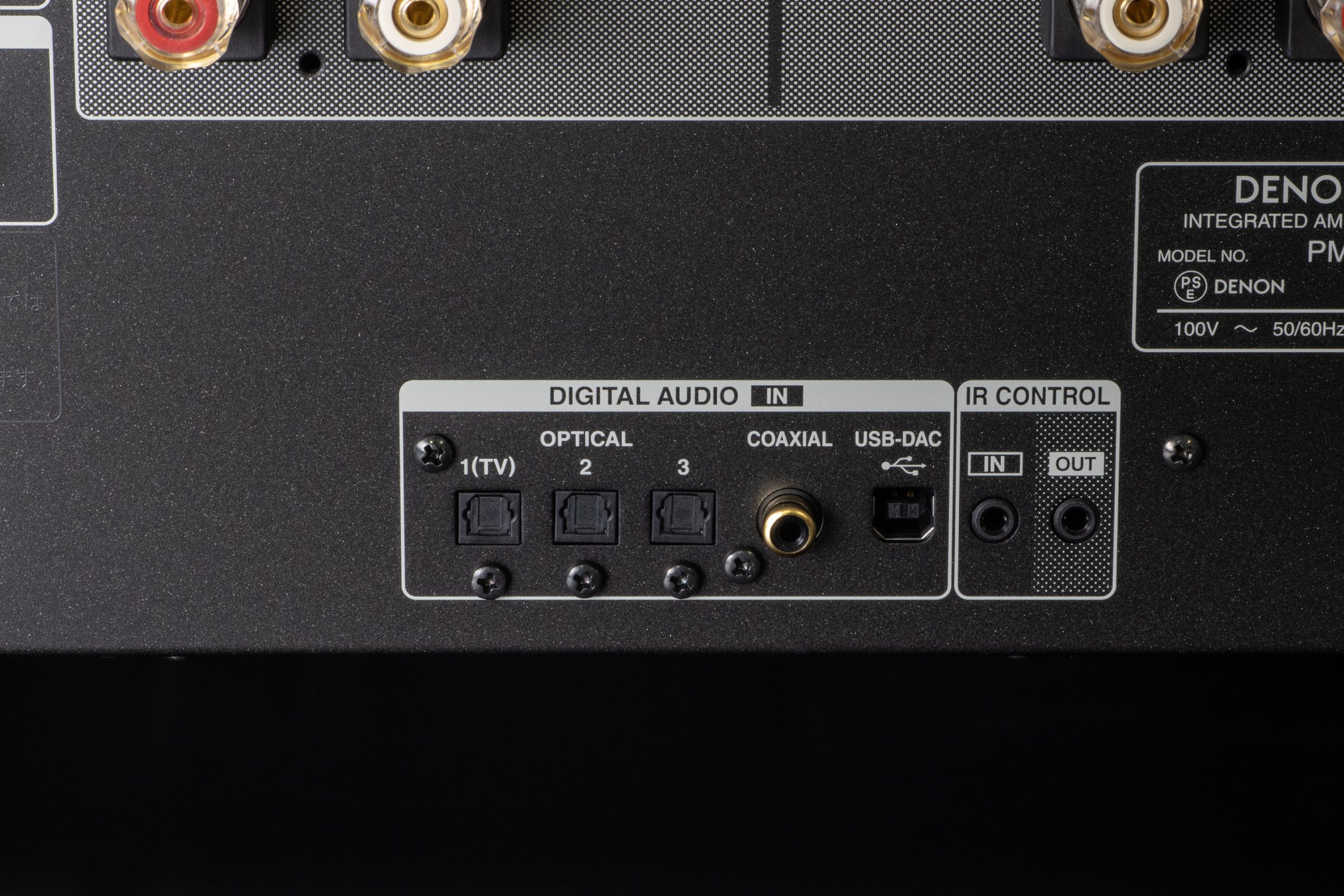
If you choose to leave the digital section on (and it does have its own completely separate power supply), you will in turn have access to a quadruple digital converter of the latest generation, which handles resolutions of 24 bit / 384 kHz and samples the signals to 1.4 MHz.
Denon PMA-A110: Sound
When listening to an amplifier for the first time, I prefer as much as possible to let the sound speak for itself. If you have received a review in advance from a product manager or read about the product’s alleged technological advantages, it is far too easy to hear exactly what you have been told you would hear. That is, placebo effect. So better listen without preconditions.
And if my written impressions since turn out to agree with the explanation, then there’s probably something to the claims. It goes without saying that you should also avoid reading other media’s tests beforehand (as this review is the first worldwide, I would not be able to do otherwise anyway).
Among other things, I compared with the aforementioned NAD M33, which is somewhat more expensive, but on the other hand includes a lot of digital extras like streaming and space correction.
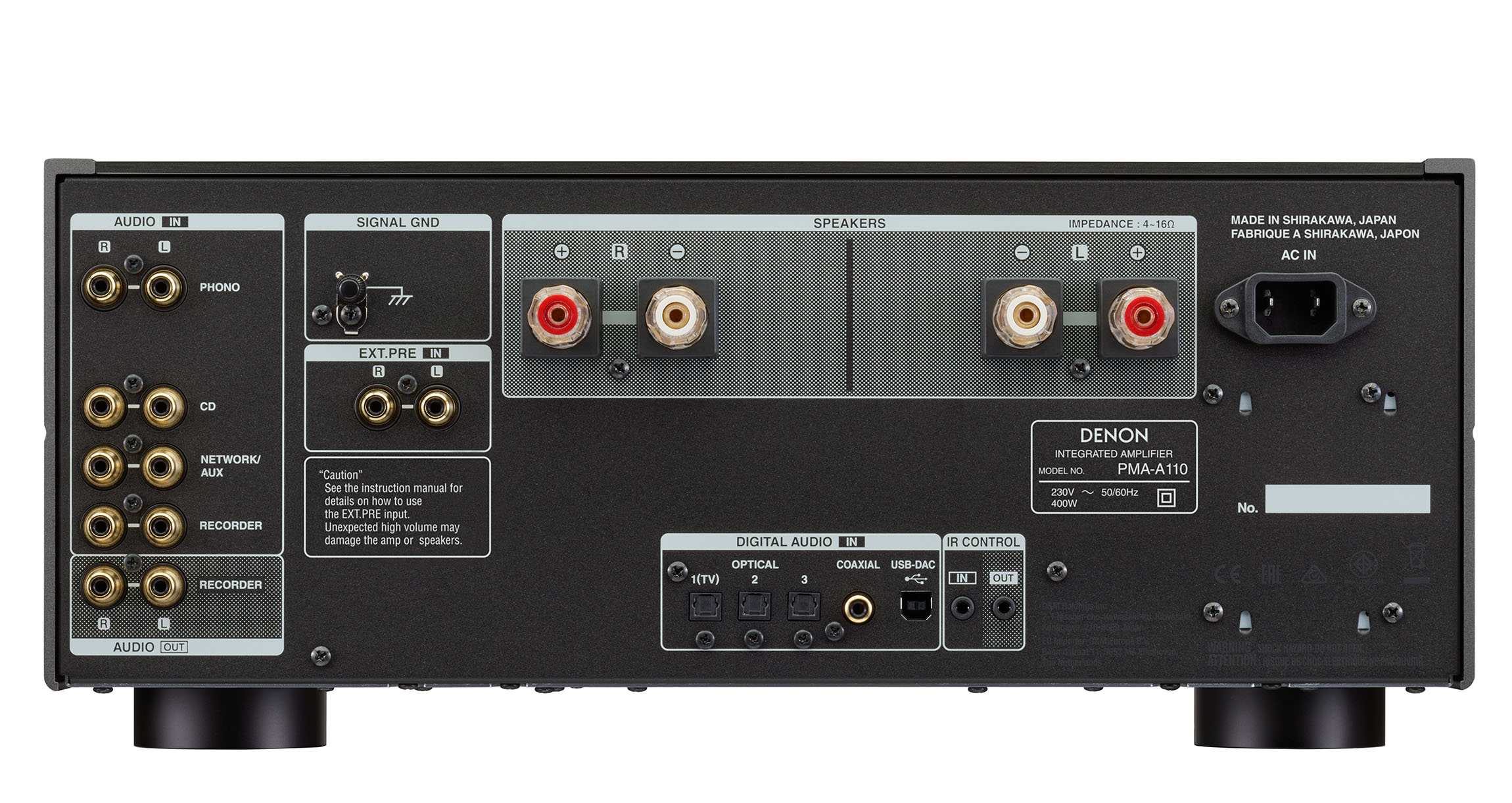
Emotional
Both are really good amplifiers – but also very different. NAD M33 plays dry and precise, but also with a rhythmic drive that makes it fun. Listening to the Denon PMA-A110 is a more emotional experience. It is a bit like a Class A amplifier or a valve amplifier. There is an integrity and coherence in the soundscape that one first discovers to have been missing when presented with it.
This is best expressed in concert recordings, where the experience of listening directly into the concert hall becomes more believable and solid. On Cincinnati Pops’ version of “The Bandit-Gallop”, you can clearly sense the dimensions of the space and the space between the instruments – also at the very bottom of the hall. Not in any demonstrative way; it just seems natural and relaxed.
I just recently praised the NAD M33 for reproducing the space well. And it does it excellently. But the Denon just makes it a notch more cohesive.
Another point where PMA-A110 brings associations to tube amplifiers is in the bass range, which is reproduced with a certain “roundness”. The bass is clean, and big drums get a good body. But it is not with the dryness and razor-sharp control that a powerful class D amplifier like the NAD M33 or a power DAC like the Lyngdorf TDAI-3400 can handle. Or for that matter a class AB power plant like the Emotiva XPA-DR2. There is not necessarily anything wrong with that. Speakers with a slightly abundantly controlled or slightly slim bass reproduction can loosen up at bit on their inhibitions.
All in all, the Denon PMA-A110 is a charming acquaintance who is likely to appeal to “old-fashioned” audiophiles who enjoy counting the members of the orchestra on classical concert recordings, and who will enjoy their favorite records. In that case, it’s about seizing the opportunity while it’s there, as the anniversary models have only been produced in a limited number of copies and will only be available in a few stores.
If, on the other hand, you have jumped completely on the digital bandwagon and expect lots of computing power and technological features in an integrated amplifier, then there are other choices that will seem more obvious.
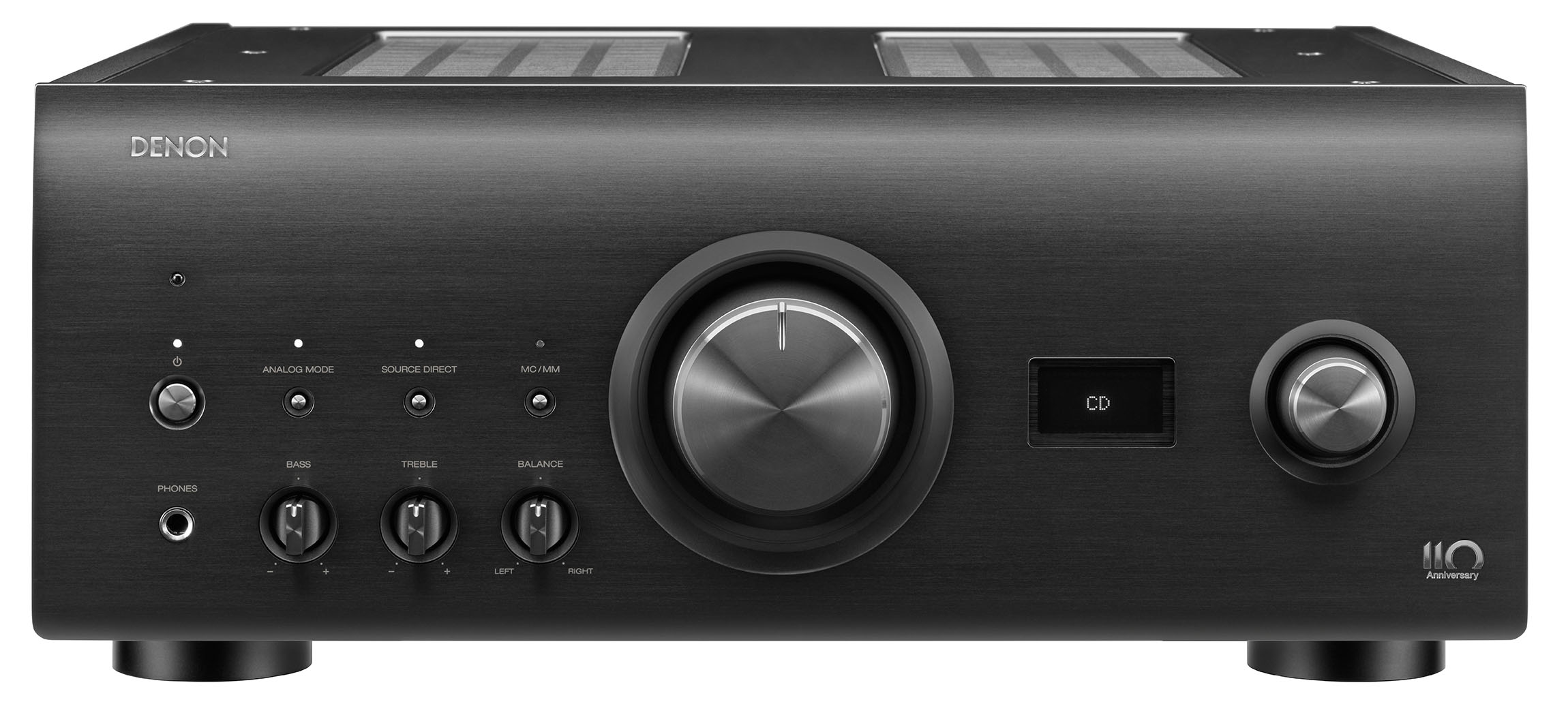
Conclusion
Denon PMA-A110 is an amplifier that evokes warm, nostalgic feelings in the reviewer. First, it looks like something that could have been built in the heyday of Japanese hi-fi. Or rather: It resembles the beautified memory of that time – because even the expensive stuff back then was not made to this standard.
Secondly – and more importantly – the PMA-A110 with its silky soft and detailed musical playing style gives associations to the best features of valve amplifiers and class A amplifiers. Like with these, the output power is limited and the Denon amplifier does not have the same crunchy iron grip on the speakers’ bass units as a modern class D amplifier with hundreds of watts under the bonnet.
That, however, should not be a restriction when it happens in such a charming way as here. And it’s with a certain sadness that I pack the giant down again and pass it on to its probably enthusiastic buyer.

We think
The design is exclusive and the sound is even more so. Extremely detailed and musical rendition. The power is limited. No built-in streaming or smart features. This is an amplifier without digital nonsense!
3199 €
Specifications
- Output power: 2 x 80 W in 8 ohms / 2 x 160 W in 4 ohms
- Inputs: Turntable (MM / MC, stereo RCA), 4 x analog input (stereo RCA), Power Amp Direct in (stereo RCA), 2 x digital (optical), digital (coaxial), USB-A
- Outputs: 2 sets of speakers (banana / screw terminals), rec out (stereo RCA)
- Resolution: 24 bit / 192 kHz (optical / coaxial), 32 bit / 384 kHz (USB-B), DSD (11.2 MHz)
- Dimensions and weight: 43.4 x 18.2 x 45 cm / 25 kg
- Web: denon.com
